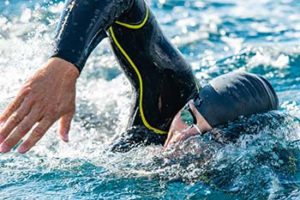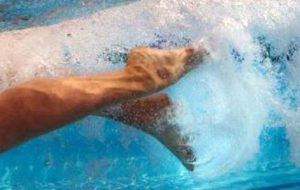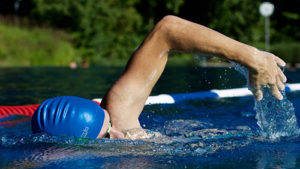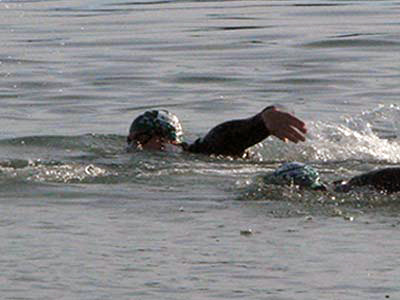 If you have been swimming for any length of time you have likely heard the term ‘bilateral breathing.’ Most typically, you will see bilateral breathing when a swimmer breathes on an odd number strokes, every third stroke for instance. More generally, bilateral breathing refers to the ability to breathe to both the left and the right side. Continue reading “Bilateral Breathing – Yes You Should!”
If you have been swimming for any length of time you have likely heard the term ‘bilateral breathing.’ Most typically, you will see bilateral breathing when a swimmer breathes on an odd number strokes, every third stroke for instance. More generally, bilateral breathing refers to the ability to breathe to both the left and the right side. Continue reading “Bilateral Breathing – Yes You Should!”
Category: Swimming
The Catch and Elusive Vertical Forearm
The freestyle – front crawl – catch may be the single most misunderstood thing in swimming. Arguably, the catch itself provides no actual propulsion and in many ways, the catch is nothing more than a brief transitional phase between the entry and the pull. Continue reading “The Catch and Elusive Vertical Forearm”
Freestyle Kicking
 I am going to start by making what many will consider to be a controversial statement. You are not looking to get much, if ANY propulsion from your kick. Continue reading “Freestyle Kicking”
I am going to start by making what many will consider to be a controversial statement. You are not looking to get much, if ANY propulsion from your kick. Continue reading “Freestyle Kicking”
Swimming Isn’t Hard
Swimming is highly technical. Swimming doesn’t require great strength, it requires great technique. If you make mistakes, those mistakes compound upon themselves and suddenly, swimming is a tremendous challenge. Continue reading “Swimming Isn’t Hard”
My Swimming Sucks
 I love swimming. My first athletic language was swimming. Swimming opened doors and took me places I never could have imagined the first time I participated in a formal swim workout. So, I experience both a sadness and an excitement when I hear someone lament their poor swimming. Sadness because I would like that everyone shares my joy of swimming and swims proficiently; excitement because every person that asks me how they can swim faster is another opportunity to help someone improve their swimming. Continue reading “My Swimming Sucks”
I love swimming. My first athletic language was swimming. Swimming opened doors and took me places I never could have imagined the first time I participated in a formal swim workout. So, I experience both a sadness and an excitement when I hear someone lament their poor swimming. Sadness because I would like that everyone shares my joy of swimming and swims proficiently; excitement because every person that asks me how they can swim faster is another opportunity to help someone improve their swimming. Continue reading “My Swimming Sucks”
Sighting in Open Water

You spent the winter working on your swimming. On race day, will you be able to navigate properly and take advantage of that new-found speed? Sighting is a skill that needs to be practiced regularly before race day. Here are some sighting tips to help prepare for your open-water race Continue reading “Sighting in Open Water”
Fundamentals of Freestyle
If you were to go to a swim meet or a triathlon you would quickly see that the good freestyle swimmers have several things in common. First, they all have very good body rotation and easily roll from side to side. You will note that their stroke is one fluid movement– Continue reading “Fundamentals of Freestyle”
Swim Threshold Pace – What is it?
After stroke technique, the next most important thing to improving your triathlon swim speed is understanding swim threshold pace (STP). You can swim hundreds of thousands of yards each month and if you don’t understand swim threshold pace, those training yards may not have been as effective as they could have been – and they may have been wasted time altogether. On race day, without an understanding of swim threshold pace, you will likely be swimming to fast – leading to lactic acidosis with the obvious negative effect; or swimming too slow – with the equally obvious negative effect. Continue reading “Swim Threshold Pace – What is it?”
How to Determine Your Swim Threshold Pace
Do your normal warm-up. Follow with a short build set to be ready to swim fast. Or you might consider our recommended warm-up.
Once you are thoroughly warmed up, you will do two time trials to establish your STP; one of 400 yards (or meters if you are in a long course pool) and one of 200 yards/meters. Continue reading “How to Determine Your Swim Threshold Pace”
Body Roll
In my opinion, body roll is the single most important aspect of the freestyle stoke, so much so that I call it the foundation on which the freestyle stroke is built. Continue reading “Body Roll”
